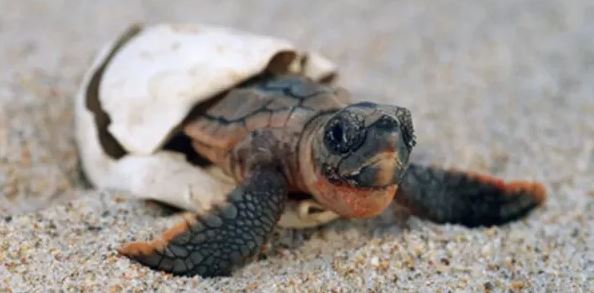
With the recent announcement that Pensacola Beach will reopen to the public starting Friday, May 1, the Santa Rosa Island Authority (SRIA) welcomes the public back to the beaches. All beachgoers are reminded to observe the required social distancing guidelines. Additionally, the public is reminded that May 1 starts sea turtle nesting season.
“It’s vital that all beachgoers increase their awareness of the Leave No Trace Behind ordinance and leave only their footprints behind. This applies year-round, but is especially important during sea turtle nesting season.” said Paolo Ghio, executive director of the SRIA.
Beginning in early May, Loggerhead, Green, and on rare occasions, Leatherback and Kemp’s Ridley sea turtles choose Pensacola Beach for nesting. Mother sea turtles return to Pensacola Beach, the same beach on which they were born, to lay their eggs — usually at night.
About 50 to 60 days after a mother sea turtle hauls her heavy body onto our shores, digs a hole in the sand with her flippers, and lays her eggs – her eggs are ready to hatch. Hatchling season on Pensacola Beach runs through the end of October, with the height of hatching usually in August and September.
Nearly all species of sea turtle are classified as threatened or endangered. Baby sea turtles face many obstacles when first leaving their nests — such as raccoons, crabs, birds and fish. Sea turtle hatchlings also use the light of the moon to guide themselves to the water, but can get distracted by bright lights from the developed areas.
Only 1 in 1,000 hatchlings will survive to adulthood. That’s why it’s so important to always be respectful and considerate of nesting sea turtles and hatchlings to ensure that future generations get to enjoy them too.
Here are some helpful tips:
- GO DARK – When walking the beach at night during turtle season, remember to use a red flashlight or none at all. Moonlight may be all you need. Please keep your property dark too. Sea turtles and hatchlings are less likely to be attracted and disoriented by red lighting.
- TURTLE ETIQUETTE – Never touch or harass a nesting sea turtle or baby hatchlings as they leave their nest. Watch quietly from a distance and never shine lights or use flash photography, which could disorient them.
- FILL IT IN and KNOCK IT DOWN – Fill in large holes, knock down sandcastles and other obstacles to leave the beach flat for nesting sea turtles and their hatchlings.
- LEAVE NO TRACE BEHIND – Remove all tents, canopies, furniture, toys and other obstacles from the beach every night.
If you see a sea turtle or hatchling that is sick, injured, in distress or deceased, please call the Florida Fish and Wildlife Conservation Commission 24-hour hotline at 888-404-3922.
These simple measures will help these threatened and endangered species succeed, so we can continue to enjoy seeing them swim in our waters and on our shore for generations to come.





















































